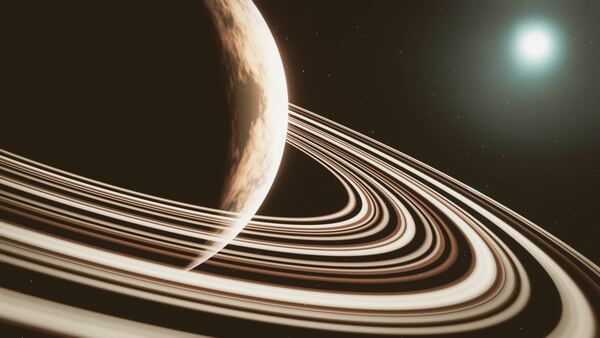This article considers Terraforming and astrobiology: How modifying other planets could change our search for life in the universe. We explore this topic as part of our series exploring the role of terraforming in space colonization.
Terraforming and the search for extraterrestrial life
Terraforming, the hypothetical process of transforming a planet or moon to make it more hospitable for human life and Earth-based organisms, has long captured the imagination of scientists and science fiction writers alike.

But what impact could terraforming have on the search for life beyond Earth?
In this article, we will explore the intersection of terraforming and astrobiology, examining how modifying other planets could change our understanding of the conditions necessary for life to exist and the potential impact on existing ecosystems.
We will also discuss the challenges and ethical considerations associated with terraforming, and how these may shape the future of space exploration and the search for extraterrestrial life.
What Is Astrobiology?
Astrobiology is the scientific study of life in the universe. It is an interdisciplinary field that draws upon knowledge and techniques from various scientific disciplines such as biology, chemistry, geology, astronomy, and physics to investigate the origins, evolution, and distribution of life in the universe.
Astrobiology is concerned with answering questions such as: What are the conditions necessary for life to arise and thrive? How common is life in the universe?
What is the range of environments in which life can exist? What is the history and fate of life in the universe? What is the potential for life beyond Earth?

Astrobiologists study a range of environments that could potentially harbor life, including other planets and moons within our own solar system, as well as exoplanets orbiting other stars.
They also study extreme environments on Earth, such as deep-sea hydrothermal vents, polar regions, and high-altitude environments, to understand the limits of life and how it adapts to extreme conditions.
Astrobiology is a rapidly evolving field, and new discoveries and technologies are constantly expanding our understanding of the potential for life beyond Earth.
The ultimate goal of astrobiology is to answer one of the most profound questions in science: are we alone in the universe?
What are the fields of astrobiology?
Astrobiology is a diverse field that combines knowledge from multiple scientific disciplines to study the potential for life beyond Earth.
Astrobiology is an interdisciplinary field of study that combines biology, astronomy, geology, chemistry, and other related fields to understand the origin, evolution, and distribution of life in the universe.
The main fields of astrobiology include:
Astronomy and Astrophysics:
The study of the physical and chemical properties of celestial objects, such as stars, planets, and galaxies, to understand the conditions necessary for life to exist and to identify potentially habitable environments.
Planetary Science:
The study of the properties and characteristics of planets, moons, and other celestial bodies, including their geological and atmospheric features, to understand the conditions necessary for life to exist.
Geobiology:
The study of the interactions between the biosphere, geosphere, and atmosphere on Earth, as well as the evolution of life and the planet’s environment over time.
Exobiology:
The study of the potential for life to exist beyond Earth, including the search for microbial life in our solar system and the study of potential habitable environments on other planets and moons.
Astrochemistry:
The study of the chemical processes and compounds that exist in space and how they relate to the formation and evolution of life.
Biochemistry:
The study of the chemical processes that occur in living organisms, including the origin and evolution of life, as well as the potential for alternative biochemistries to exist beyond Earth.
What Is The Science Of Terraforming?
Terraforming is the hypothetical process of transforming a planet or moon to make it more hospitable for human life and Earth-based organisms.
The science of terraforming involves a range of disciplines, including planetary science, atmospheric science, geology, and biology.
To terraform a planet, scientists would need to identify the conditions necessary for life to exist and then work to create those conditions on the planet. This might involve a range of techniques, such as:
Altering the planet’s atmosphere:
The atmosphere of a planet plays a critical role in determining whether it can support life. To terraform a planet, scientists might work to increase the planet’s atmospheric pressure, introduce oxygen and other gases, and remove toxic compounds.
Modifying the planet’s surface:
The surface of a planet also plays a key role in its ability to support life. To terraform a planet, scientists might work to modify the planet’s temperature, introduce water, and create habitats for organisms to live in.
Introducing life forms:
Finally, scientists might introduce Earth-based life forms to the planet to help establish a biosphere. This could involve genetically modifying organisms to better adapt to the planet’s environment or selecting organisms that are already well-suited to the planet’s conditions.
The science of terraforming is still largely theoretical, and many challenges would need to be overcome before it could be successfully implemented.
Nonetheless, the concept of terraforming has captured the imagination of scientists and science fiction writers alike, and it remains an area of active research and speculation in the field of astrobiology.
How Will Terraforming Effect Astrobiology?
Terraforming refers to the process of transforming a planet or moon into a more Earth-like environment to make it more habitable for humans and other Earth-based life forms.
The process typically involves altering the planet’s atmosphere, temperature, and surface conditions to support life.
The impact of terraforming on astrobiology is complex and multifaceted. On the one hand, terraforming could potentially create new habitats for life, expand the range of environments that can support life, and increase the diversity of life in the universe.
This could lead to new discoveries and breakthroughs in astrobiology, as scientists study how life adapts to these new environments.
On the other hand, terraforming could also have negative consequences for astrobiology.

For example, if we were to introduce Earth-based life forms to a new environment, they could potentially outcompete and displace any native life forms that may have already evolved on that planet.
This could potentially wipe out unique and valuable ecosystems and hinder our ability to study the diversity of life in the universe.
Additionally, terraforming may not be feasible for many planets or moons, especially those that are too small, too cold, or too far away from their parent star.
In such cases, we may need to rely on other methods, such as searching for life in extreme environments, to further our understanding of astrobiology.
Overall, the impact of terraforming on astrobiology will depend on a number of factors, including the planet or moon being terraformed, the methods used for terraforming, and the types of life forms that are introduced or affected.
As we continue to explore the universe and develop new technologies, it will be important to carefully consider the potential impact of our actions on the search for life beyond Earth.
‘Terraforming the Moon: Potential Benefits and Risks for Future Settlements’ is one important topic in our series exploring the role of terraforming in space colonization.
Read more about these topics by following the links below:
Republished by Blog Post Promoter
